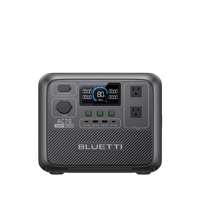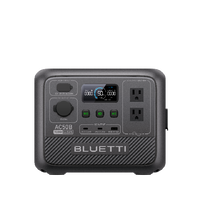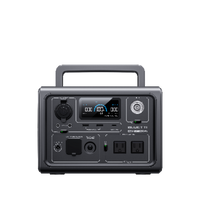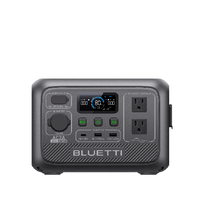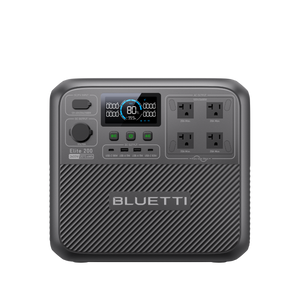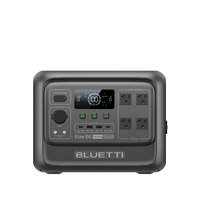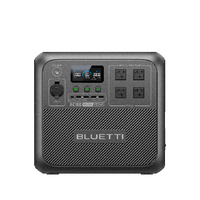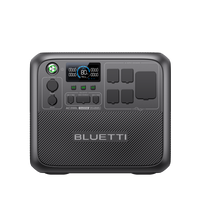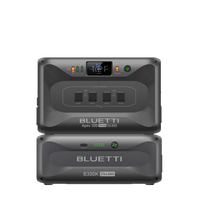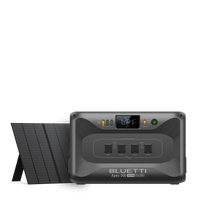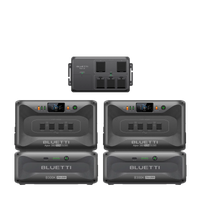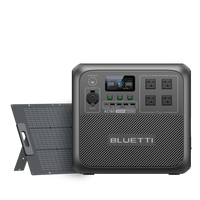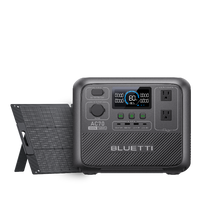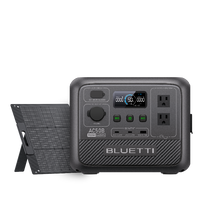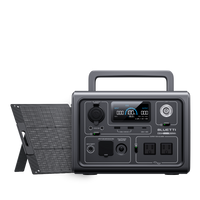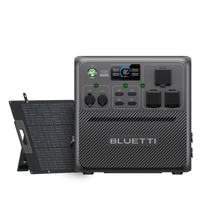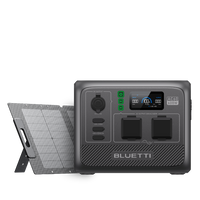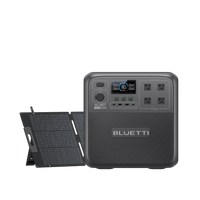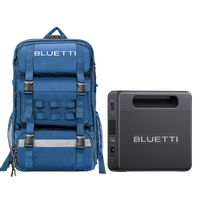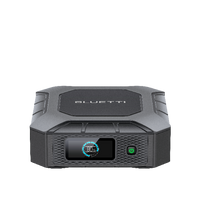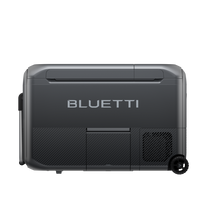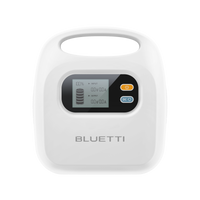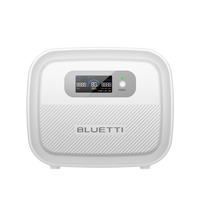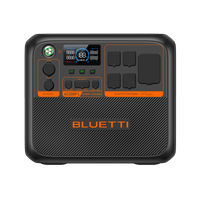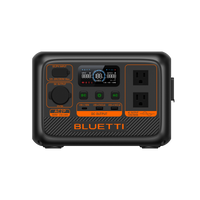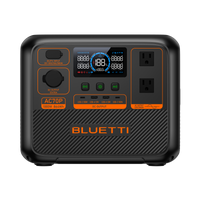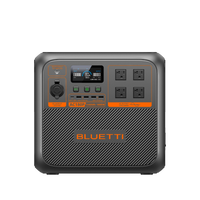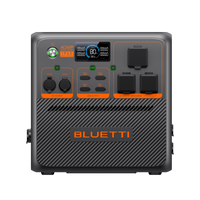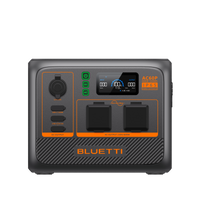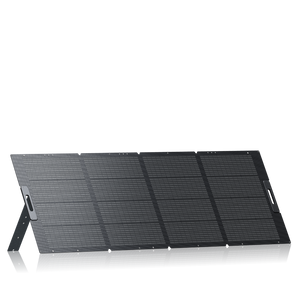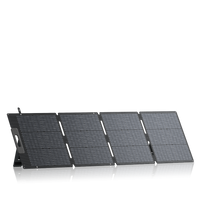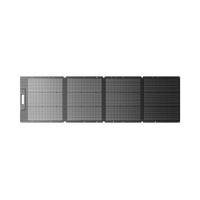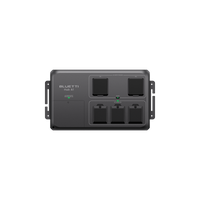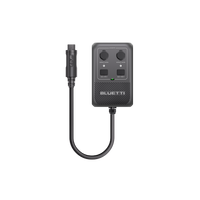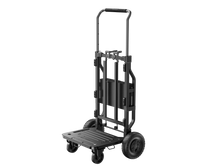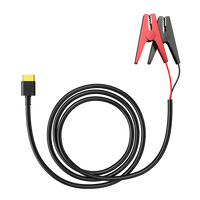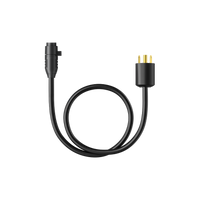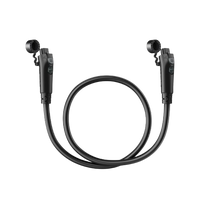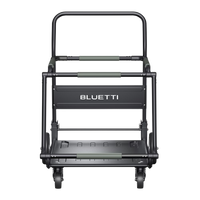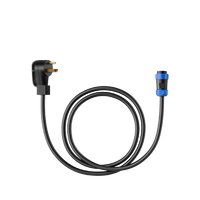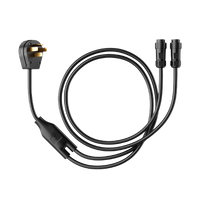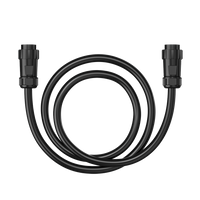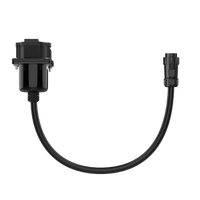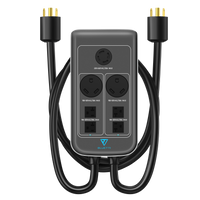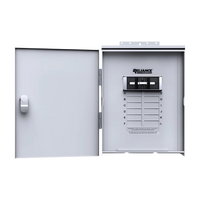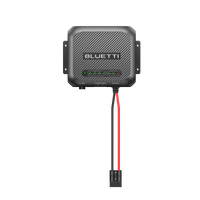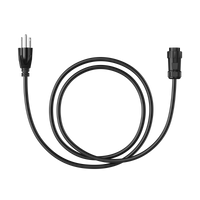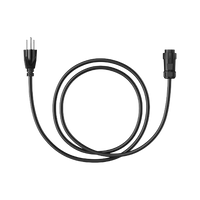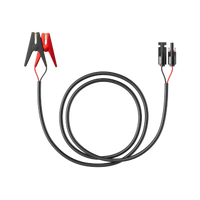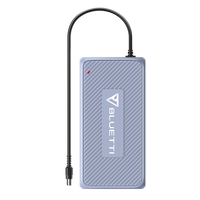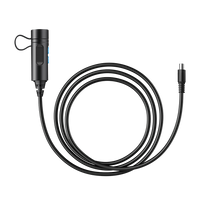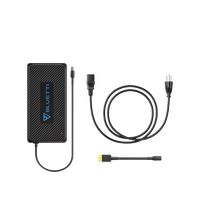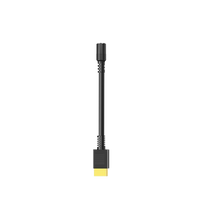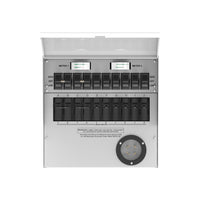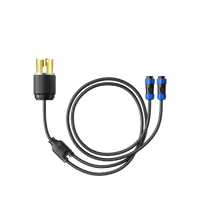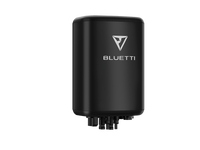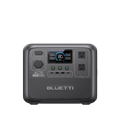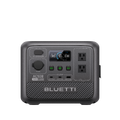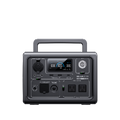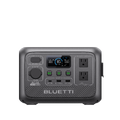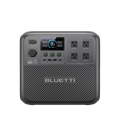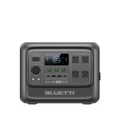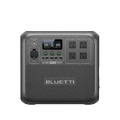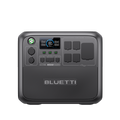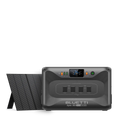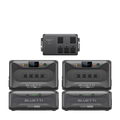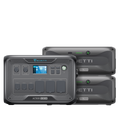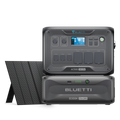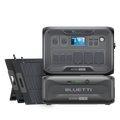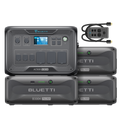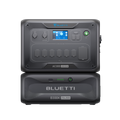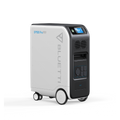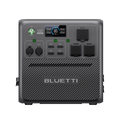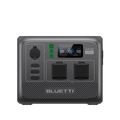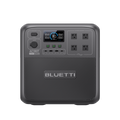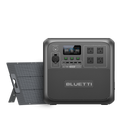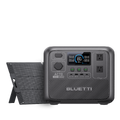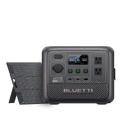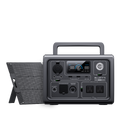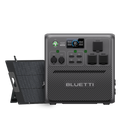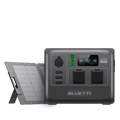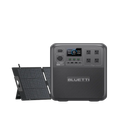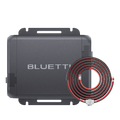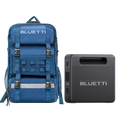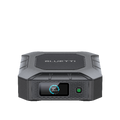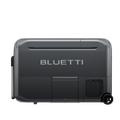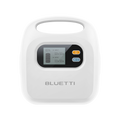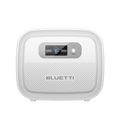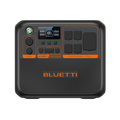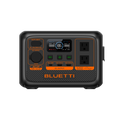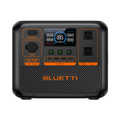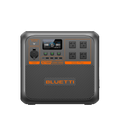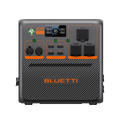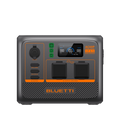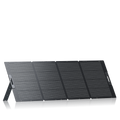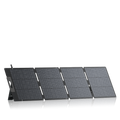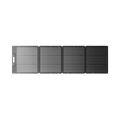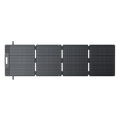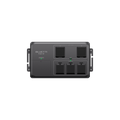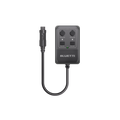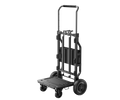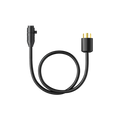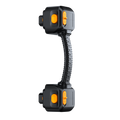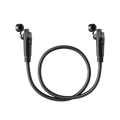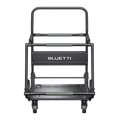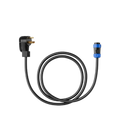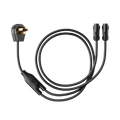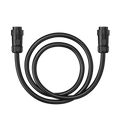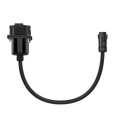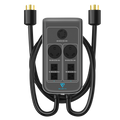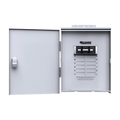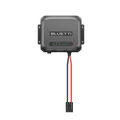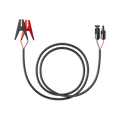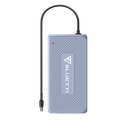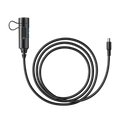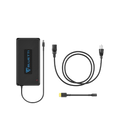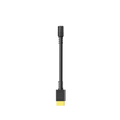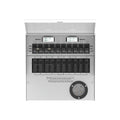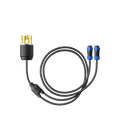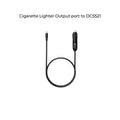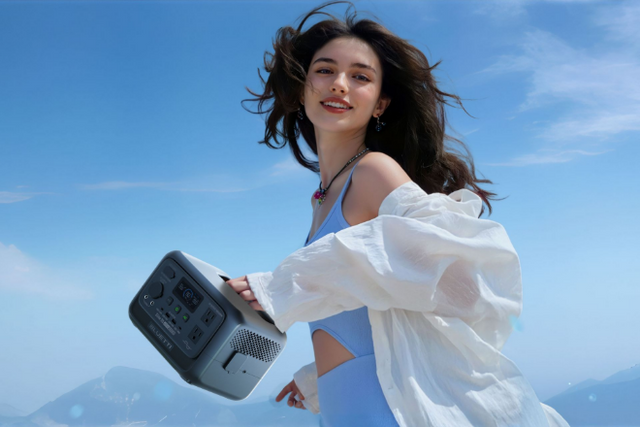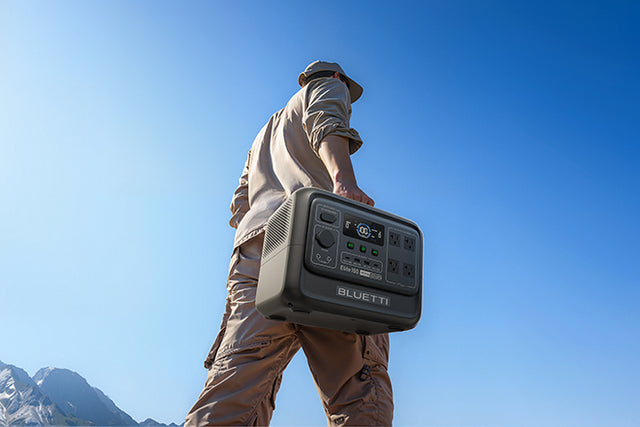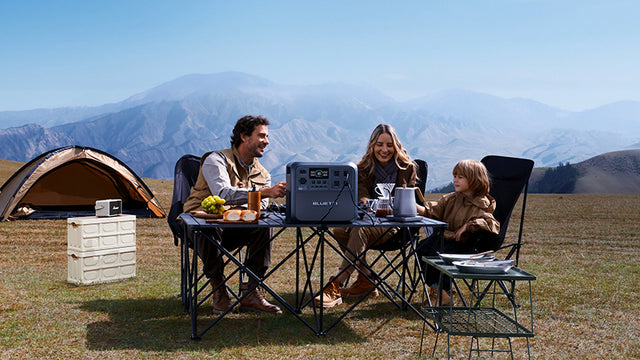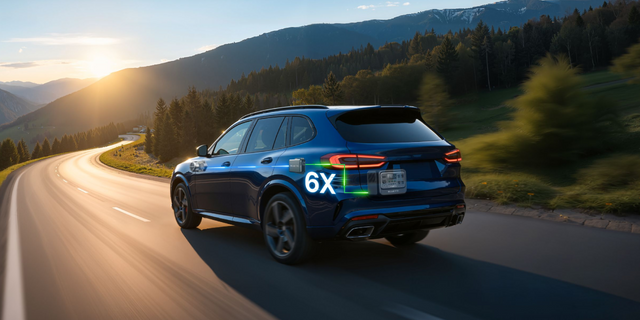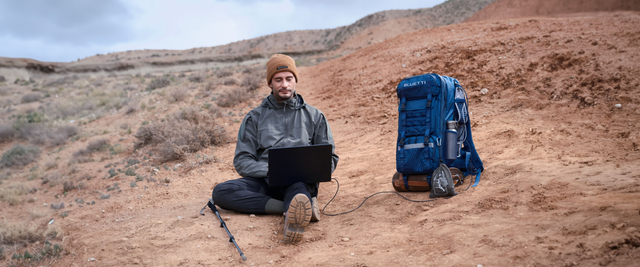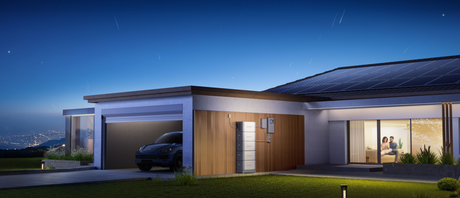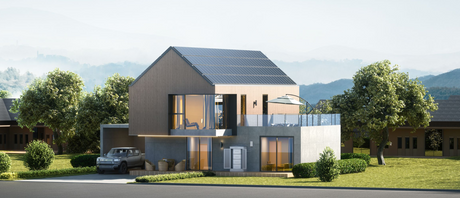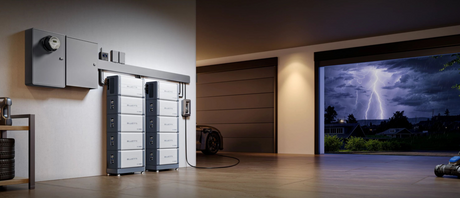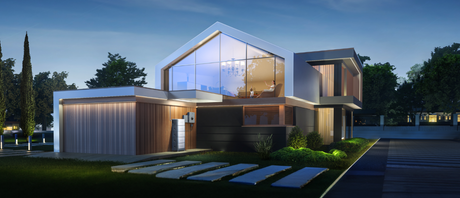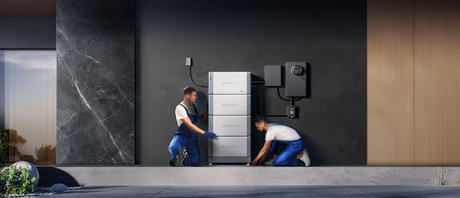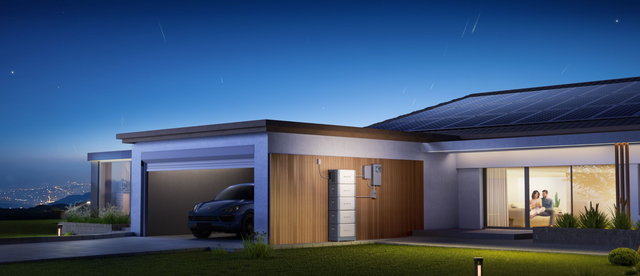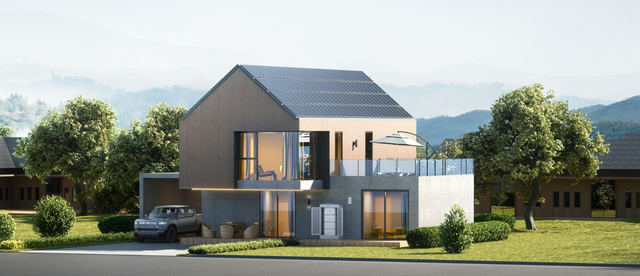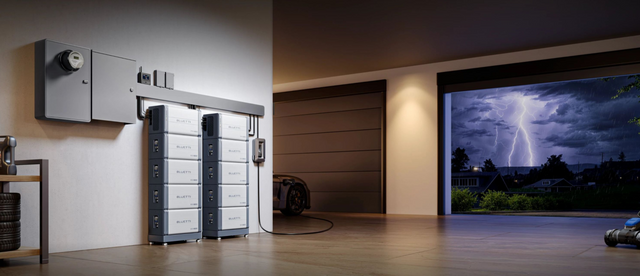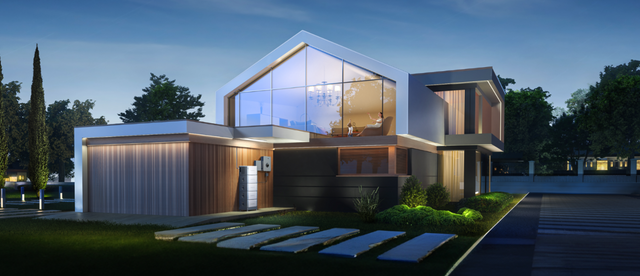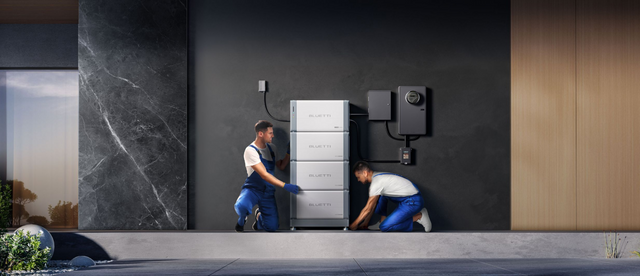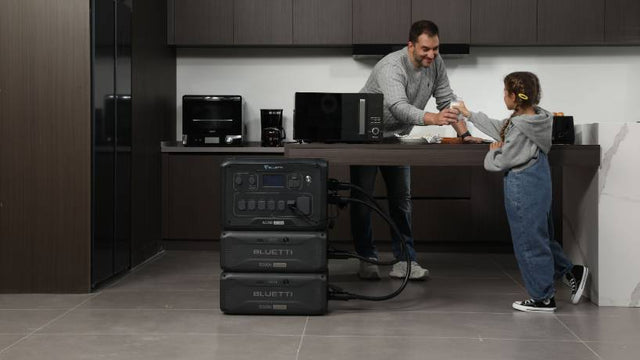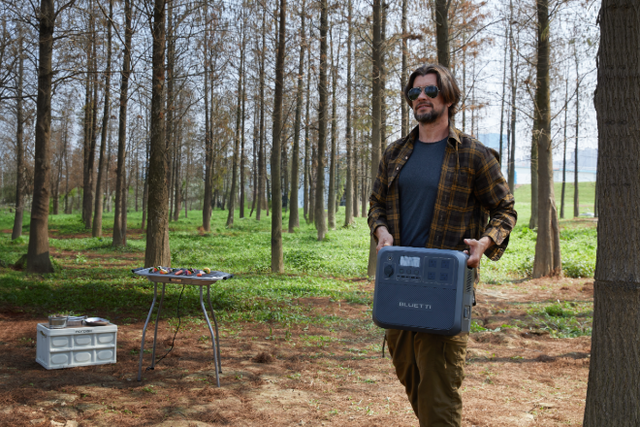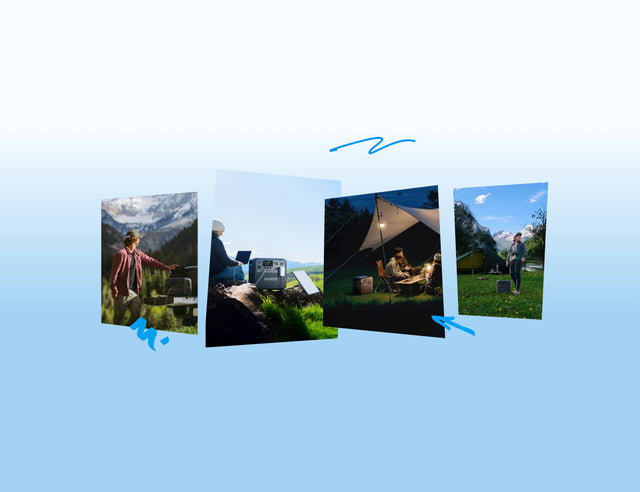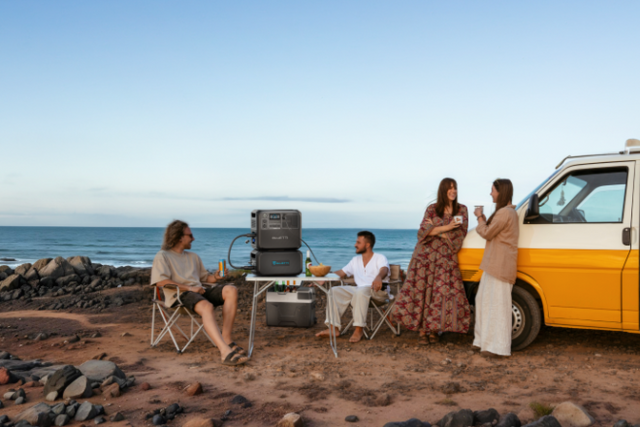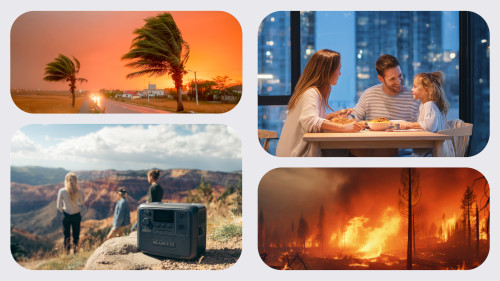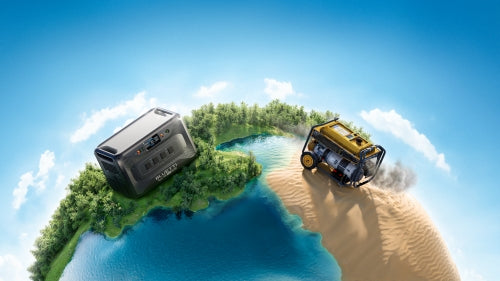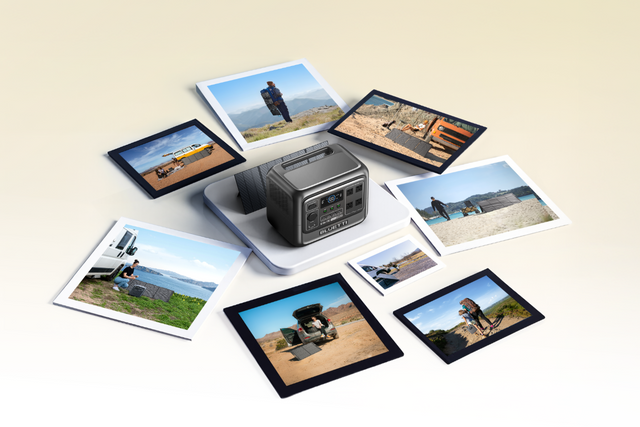Your cart is empty
Shop our products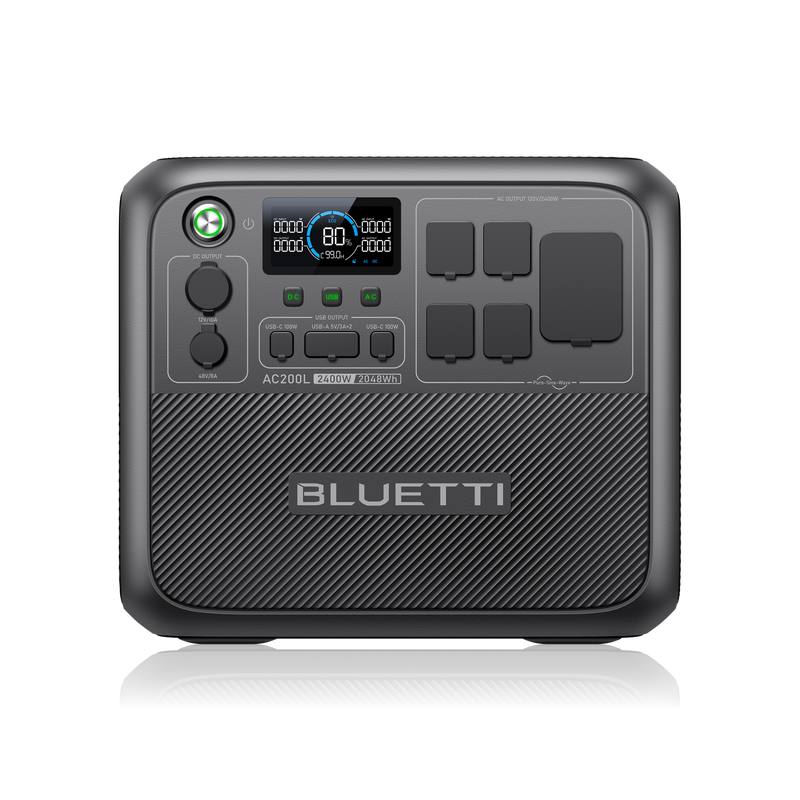
Summer power cuts are the absolute worst. One minute you're fine, the next you're melting like a popsicle in the sun because the grid decided to tap out. It even gets seriously risky, especially for seniors, kiddos, and anyone dealing with health issues. You leave anyone in a stifling room with no fan and no AC, and that's a recipe for sweaty misery, dehydration, dizziness, or fainting. If things really go south, you're staring at heat stroke, which is life-threatening. So, knowing how to keep cool without electricity is not just smart, it's kind of crucial. In this post, we'll share a bunch of tips for maintaining natural air flow, blocking sunlight, and using a backup power source. Let's help you stay cool during a long power outage!
How to Remain Cool and Be Comfortable During a Blackout?
Here's how to keep cool without electricity by allowing natural ventilation, blocking sunlight so it doesn't find a way inside, and staying cool without air conditioning. We've also shared some DIY hacks, tips for sleeping during hot nights, and employing a backup source. Have a look:
-
Natural Ventilation and Airflow
Allow natural airflow, ventilate your residence, and cool air flow during an outage in summer by following the tips beneath:
-
Retain Cold Air:
Open windows at night when the air outside turns chilly to let it roll in. But as soon as the sun starts sizzling your house in the morning, close them tightly to trap the cool air. This trick is best if it's cooler outside at night than inside and if your place has insulation or thick walls or floors to retain the cold air.
-
Face Fans Strategically:
Use battery- or solar-powered fans to circulate air during an outage. While fans don't cool the air, they improve comfort by increasing airflow over your skin. Install fans next to open windows at night in order to draw cool air.
Assuming you have a manual ceiling fan, then turn it in a counter-clockwise direction to push the air down. Use portable fans from shaded areas to send cooler air into the main living areas.
-
Generate Maximum Airflow:
You could also generate a cooling breeze in your household. Open windows or doors on opposite ends of your house to encourage cross-breezes. Always remember to clear the way, such as moving furniture or curtains out of the way.
Hot air rises. So, open upper windows or vents to let it escape outside, and have lower windows open to have cool air enter through them. This cross breeze can cool your space without any form of electricity.
-
Natural Cooling:
Hang damp sheets before the windows to cool the air when it goes through the air and switch off appliances that generate heat during the day. Use the grill outside or eat cold meals instead.
In dry climates, use night air and damp towels for cooling, but in humid areas, focus on airflow since evaporation doesn't function as well. Whereas in cities, open windows at night when the outside air is cooler than the heat trapped indoors.
-
Block Heat from Entering
You can prevent the sunlight from coming through windows to keep your residence cooler. However, blocking the sunlight outside your home is more effective than indoor methods. Landscaping also helps. Here's how you can use all of these methods:
-
Block the Sunlight:
Use thermal drapes or blackout curtains during the day in order to minimize heat, since it can reduce heat gain up to a third. Close them at night to allow cooler air. Reflective blinds or shades can also help by bouncing sunlight away, as they block up to 65% of heat.
-
External Shading:
Aluminum foil taped to windows (the shiny side out) or foil-backed cardboard can block up to 90% of the heat. The other alternative is the heat-blocking window films, which can stick on glass and block heat even as they allow in the light. Depending on their type, such films reduce heat gain by 30-70%. Furthermore, install awnings or outside shades to shield windows from direct sunlight.
Retractable fabric ones function well year-round, while metal or plastic options are more permanent. They can reduce room temperatures by 10–20°F. You can also use shade tarps or sun sails. Mount them with an inclination to permit the flow of air and select light-colored fabric that is resistant to UV. In shaded areas, they are able to block 50-80% of heat.
-
Keep Your Place from Turning Into an Oven:
Minimize direct sunlight on your roof and walls, and reduce the heat absorption. So, slap on some light-colored paint or, better yet, go for a reflective one. It'll bounce those brutal rays right back and can drop the roof temp by 30-50°F. You can also install solar mesh screens or even a pergola covered in climbing plants, which provides instant shade and also lets air flow.
-
Get Smart With Your Yard:
Trees are like giant umbrellas for your yard. Plant a few close to your walls or windows, and you could easily shave 10°F off the temperature around your house. You can also try a green wall (plants covering), and you're looking at a 20°F drop. Deciduous trees are leafy and shady in the summer, but once winter hits, they lose those leaves and let in that sweet, warm sunlight. Whereas vines and shrubbery provide a natural way of cooling walls.

-
DIY Cooling Hacks
Use these simple DIY cooling hacks to stay comfortable during a blackout. Here's how:
-
Create Your Own Air Conditioner:
Want to cool yourself? Place a bowl of ice in front of a fan. All one has to do is set a shallow bowl of ice or frozen water bottles near a small fan (one that runs on a battery or solar power). Point the fan in a way that it will blow the air against the ice.
It will utilize the cold air of the melting ice to create a cool breeze. For extra chill, add salt to the ice. This technique is able to reduce temperatures in a small area by 3-7°F and serves best in dry weather conditions. It functions perfectly in cooling off at a personal level, though the iced water melts pretty fast, and the water ought to be changed frequently.
-
Homemade Cold Packs:
You can also use dry rice, beans, or lentils to make your own cold pack. Just put them into a sock or cloth bag and freeze for 2 hours. These grains hold cold well and are reusable.
Just refreeze them after use. Put the pack around your neck, wrists, or feet to get fast relief, and it can remain cold for between 30 and 60 minutes. To add a cooling effect to the pack, an essential oil called peppermint can be added in a few drops.
-
Cool Baths or Shower:
A cool (not icy) shower or bath will get body temperatures rapidly down, since water carries heat away more rapidly than air. The tepid wash works the best so as not to shock your system.
To feel cool, you may also wet your feet or hair or spray the skin using a spray bottle. Such strategies can bring down your body temperature by up to 1-3°F for several hours. To make your bath even cooler, put one to three drops of eucalyptus or menthol in it.
-
Staying Comfortable Without A/C
When there is a power breakdown on a scorching day, you can cool off without A/C. Just wear the right clothes, stay hydrated, and eat cold foods like this:
-
Wear Comfortable Clothing:
Don't put on clingy, synthetic clothes (nylon and polyurethane). But instead, go for loose, moisture-wicking clothing like cotton or linen, maybe even bamboo, that lets your skin breathe.
Also, color matters. Light shades like white and pastels will bounce the sun right off you. Throw on a large-brimmed hat for sun coverage and follow with pen-toe/breathable shoes. For even more cooling, moisten an old bandana and loop it around your neck.
-
Stay Hydrated:
Drink cold water, as it helps in cooling down from the inside, and keep an hourly reminder as well. You can also put sodium and potassium in your water because these electrolytes will deter cramps and fatigue.
Options include water ice, coconut water, or something with electrolytes at the shop. You can also make your own electrolyte drink. Just throw together some water, a dash of salt, a squeeze of lemon, and a spoonful of honey.
Omit alcohol and caffeinated drinks on a hot day, as they're dehydrating. The same goes for gulping sugary sodas. If you want something tastier than plain water, go for herbal iced teas, like peppermint or hibiscus. Don't wait until you're parched and sip all day.
-
Eat Cold Dishes:
Eat fresh, hydrated food like watermelon, cucumbers, lettuce, maybe some gazpacho, or just blend up a quick smoothie. Yogurt's also good for protein without that “ugh, I just ate a brick” feeling. Greasy and fried foods, big quantities of meat, and spicy meals are not to be consumed during the humid heat.
Since they might increase your body temperature or cause you to feel sluggish. Snack more but at small portions, grill your food more than bake it, and consider frozen snacks like grapes or yogurt pops to cool off.

-
Sleeping Tips for Hot Nights
Sleeping at night during scorching weather and with a long outage can be hellish. However, you can use cooling gel items and evaporative cooling at night to keep yourself cool and sleep in a specific place for a comfortable night. Here's how:
-
Cooling Items:
Cooling gel mats and pillows help lower body heat by absorbing it, offering a cool surface for several hours. Some use special materials that stay cooler longer. Good options include gel pads for your back or feet, cooling pillows with gel layers, and breathable bamboo or Tencel pillowcases.
These can reduce skin temperature by 5–10°F, especially if chilled in the fridge (not freezer to avoid moisture). To make the cold pack yourself, fill a sock with flaxseeds or rice, freeze it, and place it either near your neck or feet. But at night time, cover yourself up with a sheet of cotton or linen slightly wetted. It's even better when there is a fan to accelerate the evaporation process.
-
Evaporative Cooling:
This may be swiftly achieved with the help of wet towels. As the water evaporates, your body loses heat. Lay wet towels on your wrists, neck, shoulders, or head, or pin one before a fan.
This technique is able to make you feel 5 to 15°F cooler within a two-hour period of two hours, especially if you live in dry lands. However, use cool, not ice-cold, water to dampen, because very cold towels will slacken blood circulation and decrease cooling. Also, it is important not to saturate the fabric nor dry the fabric completely. Rewet the cloth when required.
-
Sleep at Lower Level:
To be cooler at night, you can also sleep at the lowest level of your house because the heat is going upwards. Basements or ground floors tend to be cooler by 10-15°F than upstairs.
Floors made of concrete, tile, or stone also draw out body heat. If possible, a hammock, cot, or mattress on the floor causes better air circulation. To get a cross breeze, open windows when it is safe, and never go to sleep in attics or lofts, which are the warmest parts of a residence.

-
Employing Battery- and Solar-Powered Cooling Devices
Battery- or solar-powered cooling appliances such as portable, small clip, desk, or floor fans must be on hand. This is to make your life comfortable in case you experience a blackout in summer. The other alternative is solar-powered evaporative coolers, which are mostly applicable in arid climates. However, prior to a power outage, ensure that all your gadgets are fully charged:
-
Battery/Solar Powered Fans: Portable battery/solar-powered fans are very useful to keep you cool when there is no electricity. USB cables can be used to recharge many fans through power banks or solar chargers. Small clip fans run for 4–12 hours, while larger desk or floor fans can last 6–24 hours. However, using lower speeds helps save battery.
-
Solar-Powered Evaporative Cooler: These incorporate a fan and water to cool air flow when it goes through a wet filter. Such models as the Zero Breeze Mark 2 and Evapolar EvaLight operate between 4 and 8 hours on battery, with persistent solar charges making them last even longer.
-
Powering Up Before the Outage: Overloading of the power grid might happen during heat waves. Thus, it is crucial to have a backup source of power. Carry large power banks (20,000mAh or above) so that you can operate fans for 10+ hours. Recharge them fully during the daytime with 10W (or higher) solar chargers, and keep extra batteries such as LiFePO₄ to ensure high and long-term usage.
|
Device |
Power Draw |
Estimated Runtime |
|
Small USB Fan |
2–5W |
8–24 hrs |
|
Desk Fan |
10–20W |
4–12 hrs |
|
Evaporative Cooler |
20–50W |
3–8 hrs |
|
Solar A/C |
50–200W |
2–6 hrs |
-
Portable Power Stations for Cooling
You can extend the runtime of battery- and solar-powered cooling devices with the help of portable power stations. These come with large-capacity lithium batteries, which, once charged with AC or solar, can power fans for days. Portable power stations are especially useful during blackouts that extend for days.
The BLUETTI AC200L Power Station is an excellent option for shorter blackouts. It's designed for smaller residences, camps, and RVs with special RV ports. The unit features a 2,400W output and 3,600W surge power to run cooling devices. LED lights, and also charge essentials like your smartphone and laptop. You can also expand the unit's battery capacity from 2kWh to 7.6kWh to run your essentials along with cooling devices for longer.
In addition, it serves as a 24-hour UPS in emergency outages, and you can recharge it with solar, a regular plug, a car charger, AC+DC, or a generator. It takes 40 minutes to charge to 80% using an AC power supply, and it also carries with it 95% AC efficiency with low energy loss, which makes it one of the best among clean energy options. You can also charge it quickly via a 1200W solar input.
Appliances Running Time With BLUETTI AC200L:
|
Appliance |
Appliance Wattage |
Running Time |
|
Desk Fan |
10W |
82.24 hrs |
|
Smartphone Charger |
15W |
66.99 hrs |
|
Laptop |
70W |
22.06 hrs |
|
Evaporative Cooler |
50W |
29.18 hrs |
|
Solar A/C |
200W |
8.53 hrs |
If you want a unit for lengthy power cuts or to run heavy loads like a Window AC, nothing beats the powerhouse that the BLUETTI Apex 300 is. When it comes to the prolonged outage lasting days during summer, it offers 3,840W output with 2,764.8Wh. But when you combine two units, you can unlock up to 7,680W output with 5,529.6Wh capacity.
This is enough to juice up basics like Wi-Fi, laptops, phones, and a CPAP. Along with heavy loads, like a fridge and a small window AC. Besides, Apex 300 has solar charging capability (up to 30 kW with SolarX 4K). So, you can easily charge the battery to run the Window AC during the daytime power cut for a long time.
You can also charge the unit with AC and a generator, and it charges with AC up to 80% within 45 minutes. In addition, during emergencies, Apex 300 provides a 0ms UPS backup to power up your residence during an emergency. The unit also boasts weather alerts as well as auto-charging during bad weather.
Running Time of Appliances With BLUETTI Apex 300:
|
Appliance |
Appliance Wattage |
Running Time |
|
Desk Fan |
10W |
78.8 hours |
|
Smartphone Charger |
15W |
67.5 hours |
|
Laptop |
70W |
26.3 hours |
|
Evaporative Cooler |
50W |
33.7 hours |
|
Solar AC |
200W |
10.7 hours |

FAQs
How to keep the food cold without electricity?
If you don't have a backup source and think the power breakdown will last a long time, place dry ice or block ice inside your fridge to keep it cool. 50 pounds of ice in a full freezer can keep it chilly for up to 2 days.
How could I achieve a better night's sleep during the heat without a fan?
Sleep with light cotton sheets and sleep down low on the ground since heat rises. Also, take a cool bath before bed and place a wet cloth on your head or feet. You can freeze a heated water bottle and put it in your bed to cool the area.
Can wearables influence body temperature?
Yes, absolutely, since light colors and baggy clothing made of cotton or linen in hot weather allow your skin to breathe. Thus, you'll stay cooler.
Which cooling techniques of old civilizations, in the present day, are being used?
Eco-friendly methods of old are getting popular as people seek greener ways to beat the heat. Wind catchers from Persia and Egypt direct cool air into buildings and are still used in places like Iran and Dubai. Thick mud walls, such as those employed by the Sumerians and Puebloans, exist in the U.S. Southwest (e.g., New Mexico's Earthships). They can cool houses by absorbing and dissipating heat slowly.
Courtyards with fountains, once popular in Roman and Islamic homes, are used today in modern homes in Spain, Morocco, and even eco-resorts to improve airflow. Underground spaces, like Cappadocia's cities, inspire modern earth-sheltered homes that stay cool without AC. Clay pots and wet mats employed for cooling in Egypt and India have advanced into modern evaporative coolers.
How can I power cooling devices during blackouts?
Use solar- or battery-powered fans, and recharge them with power stations like the BLUETTI AC200L or Apex 300 for extended use.
How long can a BLUETTI power station run a fan or cooler?
Depending on the model, a BLUETTI unit can power a small fan for 60+ hours or an evaporative cooler for up to 30 hours on a full charge.
Final Word
Determining how to keep cool without electricity amidst scorching temperatures is imperative for your well-being and health. You can retain your residence and body cooler by maintaining natural air and blocking sunlight from entering. Also, place wet towels or even cold packs against your body, put ice in front of a fan, wear light clothing, and don't forget to drink water and eat hydrating food. Make sure to use cool gel pads and sleep in the cooler areas of your house.
Preplanning counts a lot as well. Solar- or battery-powered fans and coolers can make you comfortable during any power cut in summer. But a power station like the BLUETTI AC200L is ideal to juice them up during short outages. However, the BLUETTI Apex 300 can juice up heavy loads such as a Window AC and a fridge. When you combine two units, they offer extended backup to run heavier cooling devices along with small appliances during lengthy blackouts.

